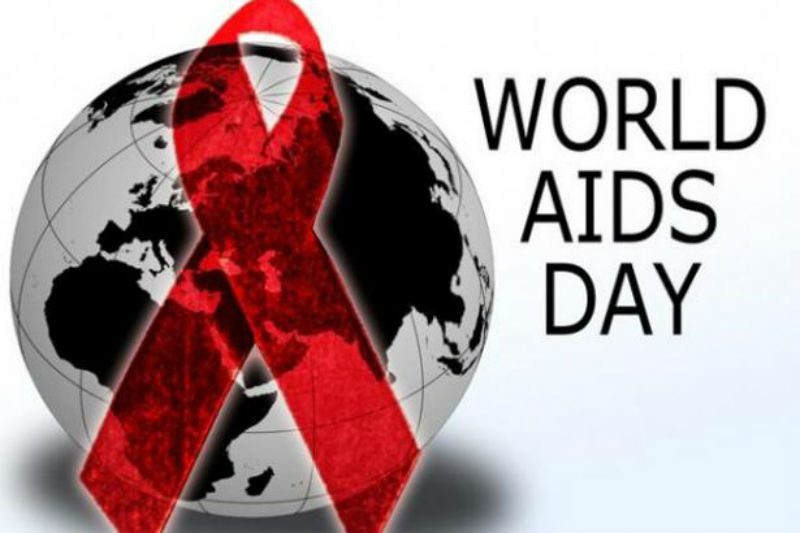Dec. 1 was World AIDS Day!
President Obama conveyed hopeful remarks on World AIDS Day at George Washington University (GWU) in D.C. by vowing to continue efforts to combat the disease.
“We’re closer than we’ve ever been to achieving the extraordinary: an AIDS-free generation,” Obama stated to the GWU audience. “But we’ve got to keep fighting, all of us. Governments, businesses, foundations, community groups, and individuals like you.”
In 2012, the United Nations stated that it’s possible to eradicate the disease by 2015 — in part, of course, by preventing new infections.
But, much of the focus was, and still is, on developing countries, and not on hot spots like the nation’s capital, which is one of the hardest hit areas battling the epidemic
In 2006 at the “Women and Response to AIDS” panel at the conference, Sheila Johnson, founder of the Crump-Johnson Foundation in Washington D.C., pointed out that another at-risk population in the African-American community is teenage girls.
Seventy percent of the U.S. teen population is African American, with 70 percent of black teens testing HIV-positive. One in 10 African-American teenage girls test HIV-positive in the nation’s capital, the highest percentage in the country among this age group.
When asked why such a high percentage test positive, Johnson said, “As long as girls see themselves as glorified sex objects in hip-hop videos, HIV/AIDS will increase within this population.” In 2014 little has changed within this demographic group.
And sadly, with African Americans at younger and younger ages being infected with the AIDS virus, the life expectancy rate of African Americans will decline. Soon we will no longer expect today’s young African-Americans to become the elders of the community.
With the South’s propensity to avoid speaking about uncomfortable subjects unfortunately the South has evolved into one of HIV/AIDS hot spots in the country.
Each year, fewer and fewer public events are being held to bring public attention that the epidemic is still in our midst. This year, PBS’s “Frontline” didn’t run its special “ENDGAME: AIDS in Black America.”
To date more than a quarter of African Americans have died of AIDS.
With the latest comprehensive data tracking the virus coming out of the Centers for Disease Control (CDC) the numbers are staggeringly alarming.
Although African American comprise of now nearly 13 percent of the U.S. population, we tragically account for approximately 44 percent of new HIV infections in 2010. But this data doesn’t reflect the wave of recent African diasporic immigrants of the last decade coming from the Caribbean Islands and the Motherland.
This demographic group is overwhelmingly underreported and underserved—for fear of not only deportation but also of homophobic insults and assaults from their communities.
According to the CDC in 2010, 1 in 22 African Americans will be diagnosed HIV-positive in their lifetime. And, it’s the leading cause of death among African American women between the ages of 25-34 and African American men between the ages of 35-44.
Good news is that HIV infections among African American women only in Massachusetts has decreased for the first time. And this decline in numbers has much to do with the indefatigable outreach by local organizations like AIDs Action Committee while operating each year on a diminishing state funded grant.
According to the Black AIDS Institute’s August 2008 report titled “Left Behind” the number of people living with HIV in Black America exceeds the HIV population in seven of the fifteen focus countries in the U.S. President’s Emergency Plan for AIDS Relief (PEPFAR) initiative, an initiative helping to save the lives of those suffering from HIV/AIDS around the world in countries like Haiti, Dominican Republic, India, South Africa, to name a few.
In other words, if black America were its own country, standing on its own like Haiti or Nigeria, black Americans would rate 16th with the epidemic in the world. The epidemic is heavily concentrated in urban enclaves like Detroit, New York, Newark, Washington, D.C and the Deep South.
There are many persistent social and economic factors contributing to the high rates of the epidemic in the African American community—racism, poverty, health care disparity, violence, to name just a few—but the biggest attitudinal factor still contributing to the epidemic and showing no sign of abating is homophobia.
While we know that the epidemic moves along the fault lines of race, class, gender and sexual orientation, and that HIV transmission is tied to specific high-risk behaviors that are not exclusive to any one sexual orientation, homophobia still continues to be one of the major barriers to ending the AIDS epidemic.
Although famous HIV-positive heterosexual African Americans, like tennis great Arthur Ashe, news anchorman Max Robinson, and rapper Eazy all died of AIDS, and basketball giant Earvin “Magic” Johnson, who is still living with the virus, highlight the fact that anyone can contract the virus, many still see the epidemic as a “white gay disease,” suggesting being gay or having sex with someone of the same gender puts you immediately at high risk.
But the truth is this: while over 600,000 African Americans are now living with HIV, and as many 30,000 newly infected each year, there is still within the black community at least one in five living with HIV and unaware of their infection; and, they are disproportionately heterosexuals.
While the number of cases across the globe will continue to decline and possibly eradicate the disease as the U.N hopefully predicts, we as African Americans we’ll not protect ourselves from this epidemic as long as we continue to think of HIV/AIDS as a gay disease.
